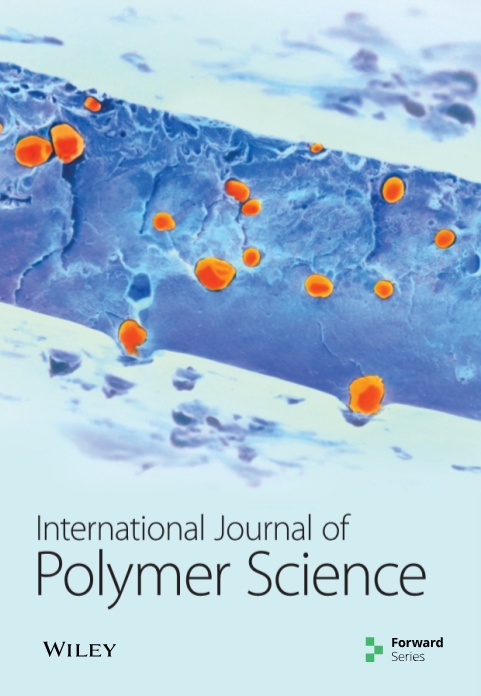Silymarin and Vanillic Acid Silver Nanoparticles Alleviate the Carbon Tetrachloride-Induced Nephrotoxicity in Male Rats
IF 3.4
4区 化学
Q2 POLYMER SCIENCE
引用次数: 1
Abstract
Natural copolymer (e.g., chitosan-loaded) and synthetic (e.g., silver nitrate-loaded) nanopolymers have many medical applications in drug delivery research for enhancing the effectuality of traditional medicine. This study aimed to investigate the potential protective activity of vanillic acid, silver nanoparticles (AgNPs) of vanillic acid, and silymarin against carbon tetrachloride (CCl4)-induced nephrotoxicity in male rats. Rats were divided into five groups; the first group (G1) was a negative control, and the other rats were treated intraperitoneally with CCl4 to induce kidney toxicity twice weekly, and then divided into four groups, G2 was a positive control and left without treatment, the third group was treated with vanillic acid, the fourth (G4) was treated with vanillic acid-AgNPs, and the fifth (G5) was treated with silymarin. In G2, renal function indices (urea, creatinine, and uric acid) showed elevated levels indicating renal toxicity. Na, K, and Ca ions were decreased, whereas Cl− was increased. Antioxidants (glutathione S-transferase, glutathione reduced, total antioxidant capacity, superoxide dismutase, and catalase) were decreased, whereas lipid peroxidation was increased in the kidney tissue homogenate. IL1 was increased, whereas CYP-450 was decreased. In the treated group, all biochemical and renal tissue texture were alleviated as a result of treatment with vanillic acid in G3, vanillic acid AgNPs in G4, and silymarin in G5. Vanillic acid AgNPs and silymarin treatment in G4 and G5, respectively, were more efficient than vanillic acid in G5 in protecting the kidneys against CCl4-induced nephrotoxicity.水飞蓟素和香草酸银纳米颗粒减轻四氯化碳诱导的雄性大鼠肾毒性
天然共聚物(如壳聚糖负载)和合成(如硝酸银负载)纳米聚合物在药物递送研究中具有许多医学应用,以提高传统药物的有效性。本研究旨在研究香草酸、香草酸银纳米颗粒(AgNPs)和水飞蓟素对四氯化碳(CCl4)诱导的雄性大鼠肾毒性的潜在保护作用。将大鼠分为五组;第一组(G1)为阴性对照,其他大鼠每周两次腹膜内用CCl4诱导肾毒性,然后分为四组,G2为阳性对照,不治疗,第三组用香草酸处理,第四组(G4)用香草酸AgNPs处理,第五组(G5)用水飞蓟素处理。在G2期,肾功能指标(尿素、肌酸酐和尿酸)水平升高,表明肾毒性。Na、K和Ca离子减少,而Cl−增加。肾脏组织匀浆中的抗氧化剂(谷胱甘肽S-转移酶、谷胱甘肽还原酶、总抗氧化能力、超氧化物歧化酶和过氧化氢酶)降低,而脂质过氧化增加。IL1升高,而CYP-450降低。在治疗组中,由于用G3中的香草醛酸、G4中的香兰醛酸AgNPs和G5中的水飞蓟素进行治疗,所有生化和肾组织质地都得到了缓解。在保护肾脏免受CCl4诱导的肾毒性方面,G4和G5中的香草酸AgNPs和水飞蓟素处理分别比G5中香草酸处理更有效。
本文章由计算机程序翻译,如有差异,请以英文原文为准。
求助全文
约1分钟内获得全文
求助全文
来源期刊

International Journal of Polymer Science
POLYMER SCIENCE-
CiteScore
6.10
自引率
0.00%
发文量
55
审稿时长
>12 weeks
期刊介绍:
The International Journal of Polymer Science is a peer-reviewed, Open Access journal that publishes original research articles as well as review articles on the chemistry and physics of macromolecules.
 求助内容:
求助内容: 应助结果提醒方式:
应助结果提醒方式:


